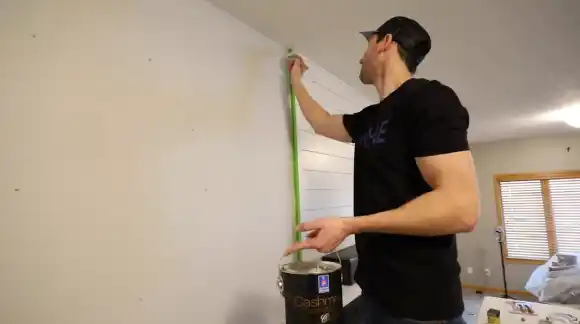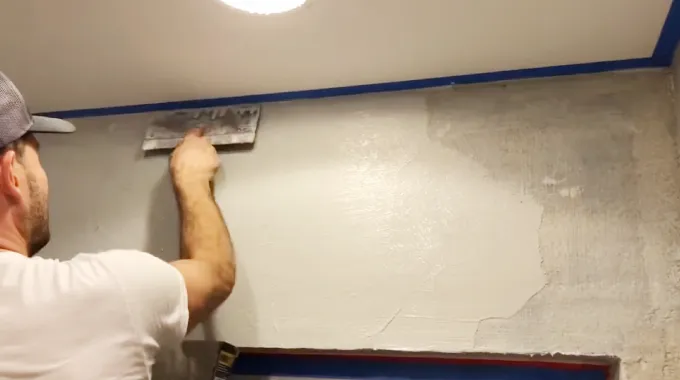Last Updated on August 2, 2023
Cement board siding is a popular alternative to traditional wood siding due to its durability and resistance to moisture, rot, and insects. But can you paint these cement boards?
You can paint your cement boards because they have infinitesimal pores that soak up paint faster than traditional cement. However, it doesn’t mean you can start painting right now. You must choose the right paint to achieve better adhesion and longevity.
Today we will intensely discuss what type of paint is best for cement board and how to paint your cement board. We will also address whether it is necessary to prime the cement board. So keep reading for more detailed information.
What Kind of Paint Should You Use on a Cement Board?
To get the best results when painting your cement board siding, it’s recommended to use 100% acrylic or acrylic latex paint. These paints are specifically designed to adhere well to cement boards and provide long-lasting protection from weathering and fading.
When repainting your cement siding, always apply two coats of paint starting from the top down and going with the material’s grain. This will ensure even coverage and prevent streaks or drips.
Be sure to choose a color that complements your home’s design aesthetic and a quality paint brand for optimal results.
How to Paint Cement Boards: DIY Steps

When painting cement boards, there are several steps to follow:
STEP 1. Clean Cement Board with Pressure Washer
Make sure all the grime and dust are completely gone by pressure washing the cement board, so it’s ready for its transformation.
Start by setting up your pressure washer and adjusting the nozzle to a high-pressure setting. Begin at one end of the cement board and work across, covering every inch of the surface. Be careful not to get too close to the nozzle, which can deeply scratch the board.
Inspect the surface closely once you’ve finished pressure washing to ensure no remaining dirt or debris. It ensures that your paint adheres properly and looks flawless in the end result.
STEP 2. Let the Surface Dry Completely
After pressure washing, wait until the surface is completely dry before proceeding with the next step to ensure a flawless finish. This is important because any moisture left on the cement board can interfere with the adhesion of paint or primer.
You can use a fan or wait for a sunny day to speed up the drying process. Also, avoid painting in humid conditions as this can cause bubbling and peeling of the paint later on.
Once you’re sure that the surface is dry, you can move on to priming (if the boards weren’t primed previously) and painting your cement board using high-quality products
STEP 3. Attach Nap Roller Cover to Roller Frame
To start painting the cement board, grab your roller frame and affix the nap roller cover to it for smooth and easy application. Using a nap roller cover ensures that you can apply an even coat of paint onto the surface without leaving any marks or streaks behind.
Choose a nap length that’s appropriate for the texture of the cement board, as that’ll help you achieve a better finish. Adding the nap roller cover to the frame is simple, just slide it onto the end of the frame and secure it in place.
Once you’ve attached the roller cover, apply your paint to the cement board surface using long, even strokes.
STEP 4. Fill a Bucket with Paint

Get ready to transform your surface into a work of art with a full bucket of high-quality acrylic latex paint. Fill a 5-gallon bucket with 1/3 exterior acrylic latex paint. This will ensure enough paint to cover your cement board completely and evenly.
When filling the bucket, stir the paint thoroughly before use to ensure an even consistency. Use a sturdy stir stick for this task.
STEP 5. Apply the First Coat of Paint with Roller
Start painting your cement board by rolling on the first coat of paint. Cover the surface evenly with the bucket’s premium acrylic latex paint. Start at one end of the board and work your way across, using long strokes in a consistent direction.
Be sure not to leave any areas untouched or unevenly coated. Watch for drips or excess paint and smooth them out as you go. Don’t forget to apply paint to any edges or corners that may have been missed.
Once you’ve completed this step, allow ample time for the first coat to dry before applying a second layer if needed.
STEP 6. Smooth the Wet Paint
Smooth any imperfections in the wet paint on your surface by gently gliding a 3-4 inch latex brush over it. Ensure a flawless finish that will impress all who see it. Make sure to use long, even strokes and avoid overlapping areas too much to prevent leaving brush marks or streaks.
It’s essential to work quickly but carefully, as cement boards absorb paint quickly and may require another coat for complete coverage. Keep an eye out for drips or paint pooling and fix them immediately by smoothing them with your brush.
STEP 7. Allow the Paint to Dry
Now that you’ve smoothed out the wet paint, it’s time to let it dry. It ensures that your cement board looks flawless and lasts long.
The drying time may vary depending on the type of paint you’re using, but typically, it takes three to four hours. Avoid touching or disturbing the painted surface while it’s drying to prevent any smudging or ruining of the finish.
STEP 8. Apply the Second Coat of Paint

Let’s cover your surface with a second coat of paint. Once the first coat has fully dried, grab your paintbrush or roller and apply the second layer evenly across the cement board.
Make sure to work in long, smooth strokes and avoid going over any areas that have already started to dry. If you notice any missed spots or uneven coverage from the first coat, touch them up.
Allow this second coat to dry completely before adding additional layers or finishing touches. Two coats of high-quality paint will protect your cement board and look great for years.
How much does it cost to paint cement board?
The average cost for a professional paint job on a 2,000-square-foot area is around $4,000. This project’s cost includes labor and materials. In general, the average price per square foot is $2.
While it may seem expensive, painting your cement board can save you money in the long run. Remember that the cost may vary depending on factors such as the condition of your siding and any necessary repairs before painting can begin.
Do I need to prime the cement board before painting?
If the cement board isn’t already primed, use a primer designed for tough surfaces, like bonding or acrylic primer, before applying any paint. This is because the primer creates a surface that will help the paint adhere properly and ensure a smooth finish.
Different types of primer are available, but choose one compatible with cement boards. Acrylic primer is an excellent option as it provides good adhesion and can be used on most surfaces.
However, bonding primer helps with adhesion on rough surfaces and may be better suited if you’re painting over a cement board that’s rough or uneven.
How often does the cement board need to be repainted?

Remember that a cement board can last up to 50 years, and the paint job lasts only 10-15 years. This means you’ll need to repaint the siding multiple times during its lifetime.
Like any other building material, the cement board is subject to wear and tear from weather conditions and exposure over time. Although the cement board doesn’t require frequent maintenance, you should monitor its overall condition and plan for repainting when needed.
Maintain the Beauty of Your Cement Board: Keep Them Painted
Now you know you can paint cement boards and give your home a fresh new look. But you must use the right paint for this material, such as acrylic latex paint.
Painting cement boards can add a pop of color and personality to your sturdy, fibrous paneling. Before painting, clean the surface thoroughly and apply a primer to ensure good adhesion.
Remember that while cement boards do not need to be repainted often, you need to inspect them for any signs of damage or wear and tear. You can enjoy its beauty and durability for a long time by taking proper care of your painted cement board.



